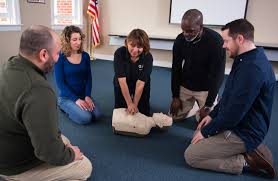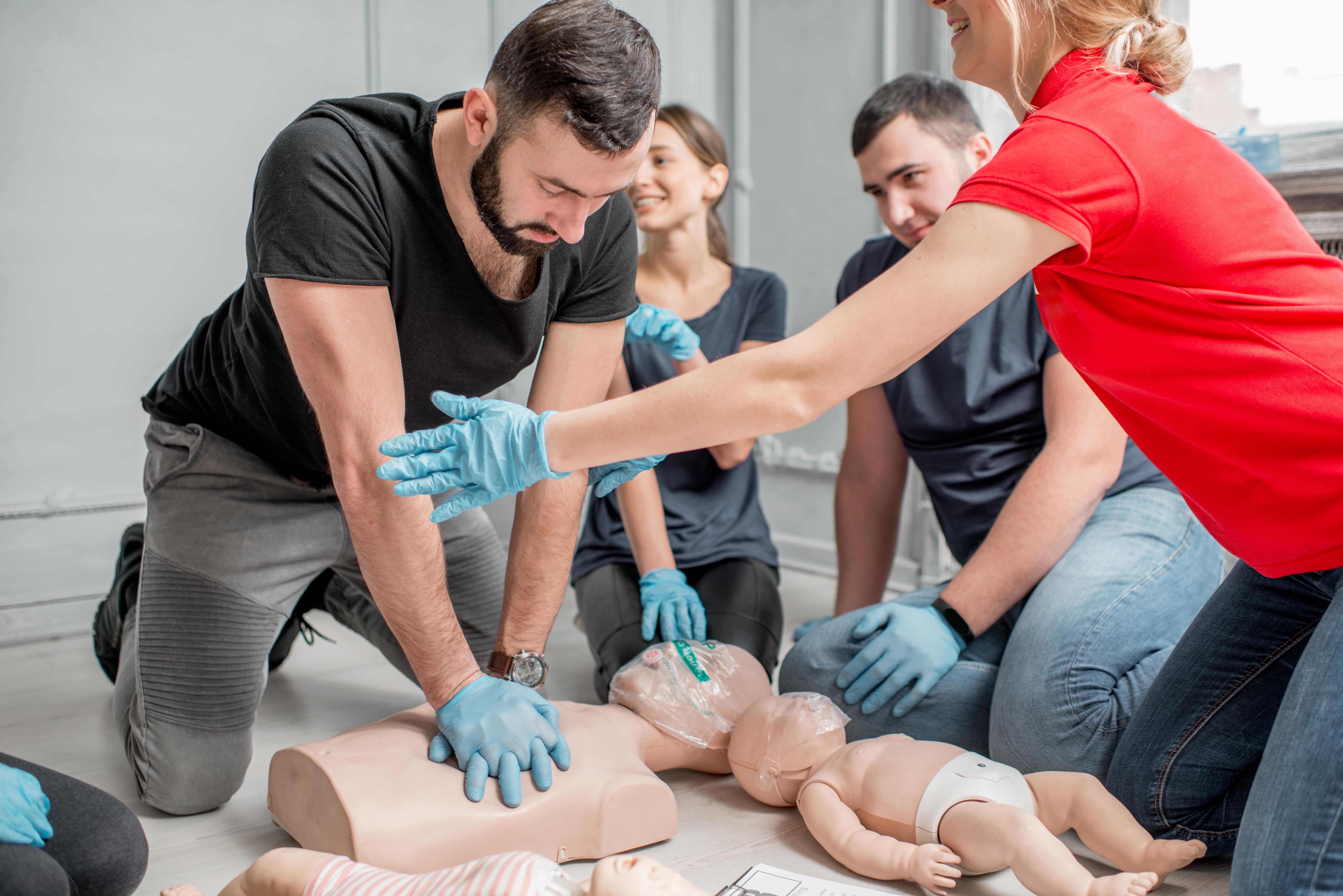Introduction
Cardiopulmonary Resuscitation (MOUTH-TO-MOUTH RESUSCITATION) is greater than just a collection of upper body compressions and breaths; it's a life-saving skill that can be the difference between life and death in emergency situation scenarios. The understanding got from a first help course or CPR course can encourage individuals to respond effectively when confronted with a cardiac arrest, choking case, or various other vital emergency situations. This short article checks out the real-life applications of CPR, highlighting its relevance and the effect of training on saving lives.
Real-Life Applications of CPR: When Training Saves Lives
Understanding CPR
CPR is a crucial emergency situation treatment utilized to preserve brain function up until additional actions are required to restore spontaneous blood circulation and breathing. It entails 2 components:
Chest Compressions: These mimic the heart's pumping activity to preserve blood flow. Rescue Breaths: These offer oxygen to the lungs, necessary for survival.The performance of CPR considerably boosts when executed right away after heart attack. Studies reveal that prompt mouth-to-mouth resuscitation can double or triple the opportunities of survival for victims.
Importance of Emergency treatment Courses
First aid programs equip people with crucial abilities past mouth-to-mouth resuscitation, including injury care, recognizing strokes, and handling cracks. By participating in these courses, you're not simply learning about emergencies; you're preparing on your own to act decisively when it matters most.
Key Elements of Emergency treatment Courses
- Basic Life Assistance (BLS): Covers grown-up, youngster, and baby CPR techniques. Choking Relief Techniques: Consists of back strikes and stomach thrusts. Wound Management: Exactly how to cleanse and clothe wounds properly. Recognizing Emergencies: Recognizing when to call for help versus dealing with a situation independently.
The Function of CPR in Heart Attack Situations
Every year, numerous thousands experience heart attack outside medical facilities. Without prompt intervention, the survival rate goes down considerably every minute that passes without CPR.
Statistics on Cardiac Arrest Survival Rates
|Time Without CPR|Survival Rate (%)|| ------------------|-------------------|| 1 Minute|90|| 5 Minutes|50|| 10 Minutes|10|
Source: American Heart Association
Being trained in CPR makes sure that onlookers can step in confidently during these essential moments.
Real-Life Study Demonstrating Successful CPR Application
Case Research 1: The Quick-Thinking Bystander
In a dynamic café one sunny mid-day, a private broke down as a result of heart attack. A nearby restaurant who had finished a first aid and mouth-to-mouth resuscitation course delved into activity. They started administering chest compressions while an additional client called 911. Within mins, paramedics showed up and made use of an Automated External Defibrillator (AED), eventually reviving the patient.
Case Study 2: Work Environment Emergency
During a company training occasion, a worker all of a sudden dropped unconscious. The good news is, several associates were accredited in both emergency treatment training courses and advanced life support methods. Their quick response consisted of calling emergency services while carrying out high-quality mouth-to-mouth resuscitation until aid arrived.
Why Take part in mouth-to-mouth resuscitation Courses?
CPR courses offer hands-on training that develops confidence in your capacities throughout emergencies. Right here are some engaging factors to sign up:
Life-Saving Skills: You discover how to save lives. Boost Confidence: Practical works out help seal your skills. Certification Opportunities: Several courses offer certificates upon completion. Community Influence: Trained people contribute positively to society by awaiting emergencies.What Are the Different Types of Mouth-to-mouth Resuscitation Courses Available?
When thinking about which training program fits your requirements best, it is necessary to recognize the different sorts of readily available programs:
Basic Adult/Child/Infant CPR Course
This training course focuses on age-specific methods customized for grownups, children, and babies with comprehensive hands-on method on mannequins.
Advanced Cardiovascular Life Support (ACLS)
Geared towards medical care professionals, ACLS builds on standard life assistance skills with sophisticated interventions like medicine administration and advanced air passage management.
Pediatric Advanced Life Support (BUDDIES)
Designed for healthcare providers that handle critically ill babies and children; buddies includes scenarios specific to pediatric emergencies.
Online vs In-Person Training
Many organizations currently offer on-line components which can supplement typical class understanding but do not change hands-on method essential for understanding skills like upper body compressions.
Benefits of Having a First Aid Certificate
Obtaining a first aid certificate demonstrates your commitment to security and preparedness in different environments-- whether at home or job-- boosting both expert reputation and individual assurance when emergencies arise.
Career Advantages
Having accreditation can boost employability in fields such as education, Adelaide CPR training classes medical care industries, fitness training markets where safety and security is paramount.
Common Misconceptions About CPR
It's necessary to resolve misconceptions bordering this critical capability:
Myth # 1: "Just Clinical Professionals Must Perform mouth-to-mouth resuscitation"
Fact: Any person can carry out fundamental life-saving techniques if trained effectively; you do not require clinical expertise!
Myth # 2: "You Can Hurt Somebody by Carrying out CPR"
While it's true there's some danger involved-- it's much outweighed by the possible advantages when done correctly!

Myth # 3: "mouth-to-mouth resuscitation Is Only Needed For Grownups"
Children likewise need timely interventions; therefore understanding pediatric methods is just as vital!

FAQs About Real-Life Applications of CPR
FAQ 1: What need to I do if I see someone collapse?
If you witness a person collapse:
- Check responsiveness Call emergency situation services Begin carrying out mouth-to-mouth resuscitation instantly if they show no indicators of breathing
FAQ 2: Just how typically need to I renew my certification?
Most companies suggest restoring your emergency treatment certificate every 2 years due to advancing guidelines and practices.
FAQ 3: Can I learn mouth-to-mouth resuscitation online?
While online programs provide beneficial details, hands-on method is essential for understanding skills effectively-- search for hybrid options if possible!
FAQ 4: What are some pointers for doing reliable breast compressions?
Aim for:
- A deepness of at least two inches A rate around 100-120 compressions per minute Allow full recoil between compressions without raising hands off the upper body
FAQ 5: Do I need unique devices for executing rescue breaths?
No unique tools is called for! Nonetheless utilizing barrier tools like face shields can boost safety and security while giving rescue breaths if available.
FAQ 6: What duty does AED play along with CPR?
Automated External Defibrillators assess heart rhythm & & advise whether shocks are required which dramatically enhances possibilities of survival when made use of alongside premium chest compressions!

Conclusion
The real-life applications of CPR are indisputable; they expand far past academic knowledge right into actual scenarios where lives are conserved with crucial actions taken by experienced people. Enlisting in a detailed first help course or participating in specialized CPR courses furnishes you with very useful abilities that can make all the distinction during an emergency circumstance-- not simply profiting others yet encouraging yourself as well! The time spent today prepares you for whatever tomorrow might bring-- and isn't that something worth considering?